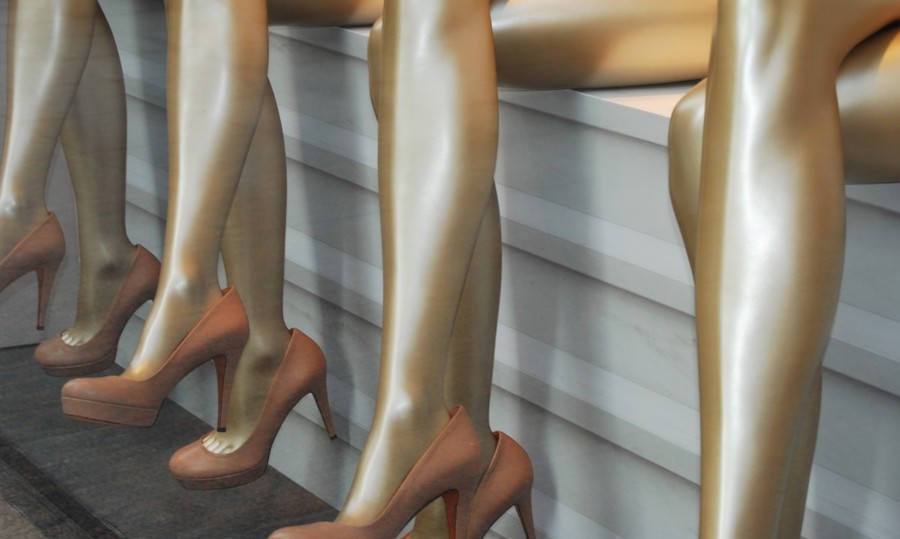Gold-coated pantyhose shows that light-emitting apparel may be feasible
 (Reference image from Pxhere).
(Reference image from Pxhere).
A pantyhose coated in gold is being presented as the next viable step towards developing wearable luminous clothing.
The idea is not only targeted at fashionistas aiming to attract all eyes but also at first responders and nighttime construction workers who need safety gear, as well as athletes who want light-emitting apparel.
In a paper published in the journal Matter, researchers with the University of Windsor explain that they decided to use a typical ultrasheer pantyhose as the transparent conductor that is needed in all light-emitting devices because their proposal involves applying electroless nickel-immersion gold metallization. This solution-based metal-deposition technique is often used to make printed circuit boards and it only deposits metal on nylon and spandex fibre surfaces.
 These photographs show light-emitting textiles displaying the 'smiling face' emoji, a rectangular spiral, and the number 8. (Image courtesy of The Carmichael Lab).
These photographs show light-emitting textiles displaying the 'smiling face' emoji, a rectangular spiral, and the number 8. (Image courtesy of The Carmichael Lab).By employing this technique, they were able to coat a pantyhose with a highly conductive gold film only about 100 nm in thickness. They found that the coating process allowed the pantyhose fabric to retain its semi-transparency and stretchiness.
"Users want light-emitting displays that are integrated into fabrics so that they are soft, lightweight, stretchable, washable, and wearable -just like ordinary clothing but with light-emitting panels that can illuminate the user or display graphics/information," Tricia Carmichael, the senior author of the study, said in a media statement.
One major hurdle remains in the way of incorporating wearable light-emitting devices into everyday life: the ability to power them without bulky energy generators and storage systems
According to Carmichael, existing fabrication methods involve sewing stiff diodes, wires, and optical fibres into textiles, something that results in garments that lack the stretchability and softness of their non-luminous counterparts. This type of apparel is also difficult to wash.
These challenges, however, are overcome with the new approach, which allowed the scientists to even create a dynamic display composed of seven rectangular segments that can rearrange to display numbers zero through nine.
Despite the costs associated with adding gold to the textiles, in the view of Carmichael and her colleagues, the metal's chemical stability and safety for skin make it an excellent choice for wearable materials.
The researchers explain that since such a small quantity of gold (a coating 1,000 times thinner than a human hair) is needed to imbue textiles with the conductivity they need to light up, they are not concerned about the cost or other costs associated with scaling up production.